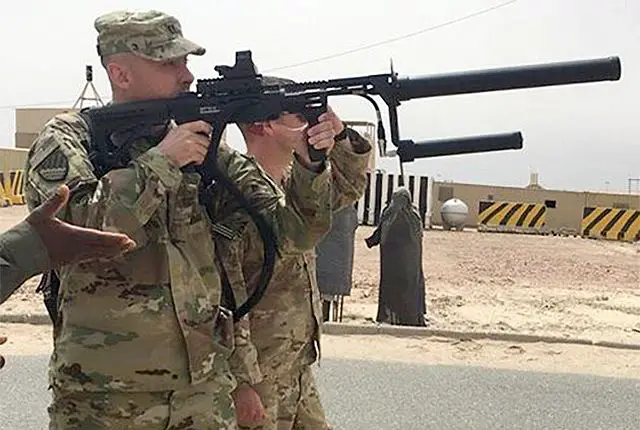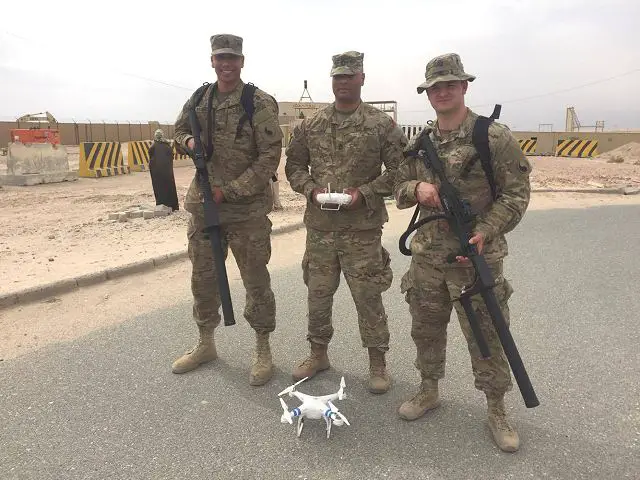|
|
|||
|
Military Defense Industry Technology - Counter-Drone Technology
|
|||
|
|
|||
| U.S. soldiers train with DroneDefender rifle to neutralize drone threats in Iraq and Syria. | |||
|
Recent attacks by the Islamic State of Iraq and Syria have changed the 21st-century battlespace by employing airborne drones for reconnaissance and attacks. To response to this new threat, U.S. Army soldiers trained with the DroneDefender, a point-and-shoot, electromagnetic, rifle-shaped weapon that disrupts communications between a remote-controlled drone and its operator.
|
|||
|
|
|||
 U.S. Soldiers trained with DroneDefender, a point-and-shoot, electromagnetic, rifle-shaped weapon that disrupts communications between a remote-controlled drone and its controller. (Source photo US. MoD) |
|||
|
|
|||
|
While the U.S. military works on a range of options to counter drone technology, the system provides a safer and more accurate alternative than other methods, such as shooting drones with a rifle.
DroneDefender is a directed-energy unmanned aircraft system (UAS) countermeasure. It quickly disrupts the adversary's control of the drone, neutralizing it so that no remote action, including detonation, can occur, minimizing drone damage and risk to public safety. The Battelle DroneDefender is a thoroughly dystopian looking gun-type gadget that uses targeted radio pulses to neutralize in-flight drones and force them to land or hover. The DroneDefender can target the drone's control signal. The drone controller can be a hand-held device operated by a person or a command module attached to the drone itself. Drones are classified by weight and range from light commercial-off-the-shelf to heavier, military grade varieties. Counter-drone technologies can have a variety of effects besides dropping them from the sky. |
|||
|
|
|||
 29th Infantry Division, Virginia Army National Guard Soldiers took part in a counter-drone technology demonstration at Camp Buehring on April 6, 2017. (Source photo US. MoD) |
|||














